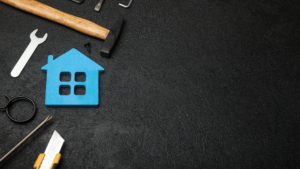Water damage can turn your world upside down in an instant. The aftermath can be overwhelming, whether it’s a burst pipe, a storm-related disaster, or a persistent leak. Yet, there’s a structured approach that can help you reclaim your space – the water damage restoration process.
This comprehensive guide will guide you through the essential steps of water damage restoration.
Understanding Water Damage
Water damage is a common and often devastating issue that can affect any home or business. Understanding the various aspects of water damage is the first step in effectively dealing with and mitigating its consequences.
Causes of Water Damage
Water damage can occur for a variety of reasons, including:
- Natural Disasters: Flooding from heavy rains, hurricanes, or storms can quickly lead to water damage, affecting homes and properties in their path.
- Plumbing Failures: Burst pipes, leaky faucets, and faulty plumbing systems can cause extensive water damage if not promptly addressed.
- Appliance Malfunctions: Malfunctioning appliances like washing machines, dishwashers, or water heaters can release large quantities of water into your home.
- Roof Leaks: Damaged or deteriorated roofs can allow water to seep into your home, causing both interior and structural damage.
- Sewer Backup: Sewer backups can result in contaminated water entering your property, posing serious health problems.
Types of Water Damage

Understanding the different types of water damage is crucial for appropriate response and restoration efforts:
- Clean Water Damage: This type of damage involves clean, potable water from sources like burst pipes or rainwater. While it may seem harmless, prolonged exposure can lead to mold problems.
- Gray Water Damage: Gray water is slightly contaminated and may come from sources like washing machines or dishwashers. It may contain chemicals or contaminants and can pose health risks if not treated promptly.
- Black Water Damage: The most severe type, black water damage, comes from highly contaminated sources like sewage backups or floodwaters. It contains pathogens and toxins and requires professional cleanup due to its health hazards.
Common Signs of Water Damage
Recognizing the signs of water damage early can prevent more extensive issues. Look out for:
- Water Stains: Yellow or brownish stains on ceilings or walls often indicate water leaks.
- Musty Odors: A persistent musty or damp smell may be a sign of hidden water damage or mold growth.
- Peeling Paint or Wallpaper: Moisture can cause paint or wallpaper to peel away from surfaces.
- Sagging or Warped Floors: Water damage can affect flooring, causing it to warp or sag.
Health Risks
Water damage can lead to various health risks, especially when it involves contaminated water. Mold growth is a common consequence of water damage and can exacerbate allergies and respiratory issues. Additionally, exposure to black water can lead to severe illnesses, making it essential to address water damage promptly and safely.
Assessment and Inspection: The First Steps in Water Damage Restoration

The immediate response is critical when water damage strikes, whether from a burst pipe, flooding, or any other source. One of the first and most crucial steps in the water damage restoration process is assessing and inspecting the affected area. This step lays the foundation for the entire restoration effort, guiding professionals in determining the extent of the damage and the necessary actions to be taken.
The Importance of Assessment and Inspection
- Understanding the Extent of Damage: The assessment phase allows our restoration experts to understand how far-reaching the water damage is. They will determine which areas are affected, the severity of the damage, and the materials or structures impacted.
- Identifying the Source: It’s essential to pinpoint the source of the water intrusion. Whether it’s a burst pipe, a leaking roof, or flooding, knowing the source helps in addressing the root cause to prevent future issues.
- Assessing Health and Safety Risks: Depending on the type of water damage, there can be health and safety risks associated with contamination. An inspection helps identify potential hazards, such as black water contamination or mold growth, so appropriate safety measures can be taken.
- Developing a Restoration Plan: After the assessment, our restoration professionals can create a tailored plan of action. This plan outlines the necessary steps to mitigate damage, remove water, and restore the affected area to its pre-damage condition.
The Inspection Process
During the inspection phase, trained professionals follow a systematic approach:
- Visual Assessment: Experts begin with a visual inspection of the affected area. They look for visible signs of water damage, such as water stains, discoloration, or structural issues.
- Moisture Detection: Specialized equipment, like moisture meters and thermal cameras, is used to detect hidden moisture within walls, ceilings, or floors. This is crucial to assess the full extent of the damage.
- Source Identification: The source of the water intrusion is identified and addressed to prevent further damage. This may involve shutting off water supplies, repairing leaks, or tarping a damaged roof.
- Classification of Water Damage: The water damage is categorized into clean, gray, or black water, which helps determine the appropriate restoration methods and safety precautions.
- Documentation: Detailed assessment findings are essential for insurance claims and record-keeping. Photos, notes, and moisture readings are typically recorded.
Safety First
Throughout the assessment and inspection process, safety is paramount. Our professionals take precautions to ensure their safety and that of the occupants.
Water Extraction and Drying: Removing Moisture and Restoring Balance
After the initial assessment and inspection comes a critical phase in the water damage restoration process: water extraction and drying. These crucial steps are essential for preventing further damage, mold growth, and structural issues.
The Significance of Water Extraction and Drying
- Preventing Mold Growth: Excess moisture is the ideal mold and mildew breeding ground. Swift water extraction and drying help mitigate the risk of mold infestations, which can lead to health issues and costly remediation efforts.
- Preserving Building Materials: Prolonged exposure to water can weaken structural elements like walls, ceilings, and flooring. Quick extraction and drying can salvage these materials, reducing the need for extensive repairs or replacements.
- Limiting Secondary Damage: Water can seep into hidden areas within walls, floors, and ceilings. Water extraction ensures that no moisture is left behind, preventing hidden damage that may not be immediately apparent.
- Enhancing Indoor Air Quality: Damp environments can foster the growth of bacteria and allergens, leading to poor indoor air quality. Proper drying helps restore a healthy living or working environment.
The Water Extraction Process
Water extraction involves the removal of standing water from the affected area. The process typically includes:
- Pumping or Vacuuming: Industrial-grade pumps or wet/dry vacuums are used to remove standing water quickly. The choice of equipment depends on the volume of water.
- Carpet and Upholstery Extraction: Carpets, rugs, and upholstered furniture can trap significant amounts of water. Specialized equipment is used to extract moisture from these items effectively.
- Moisture Detection: Moisture meters are employed to assess the moisture content of building materials and ensure that no hidden pockets of moisture remain.
The Drying Process
Drying follows water extraction and is equally crucial in the restoration process. Here’s how it’s done:
- Air Movement: Powerful air movers are strategically placed to circulate air and speed up drying. Increased airflow helps moisture evaporate more quickly.
- Dehumidification: Dehumidifiers remove excess moisture from the air, further expediting the drying process. They are particularly effective in enclosed spaces and areas with high humidity levels.
- Monitoring: Moisture levels are continuously monitored throughout the drying process to track progress. Adjustments are made as needed to achieve optimal moisture levels.
Choosing the Right Equipment
Professionals use specialized equipment designed for efficient water extraction and drying. This equipment includes:
- Industrial-grade pumps and wet/dry vacuums
- Air movers and fans
- Dehumidifiers
- Moisture meters and sensors
Dealing with Insurance Claims: Streamlining the Process
When water damage strikes, swift action is essential, and having the right insurance coverage can be a lifesaver. Good To Go Restoration simplifies the claims process for you. We assist in documenting the damage, providing essential information, and streamlining the insurance claim process, ensuring that you receive the coverage you deserve.
Contact us today, and let us help you confidently navigate the path to restoration.





